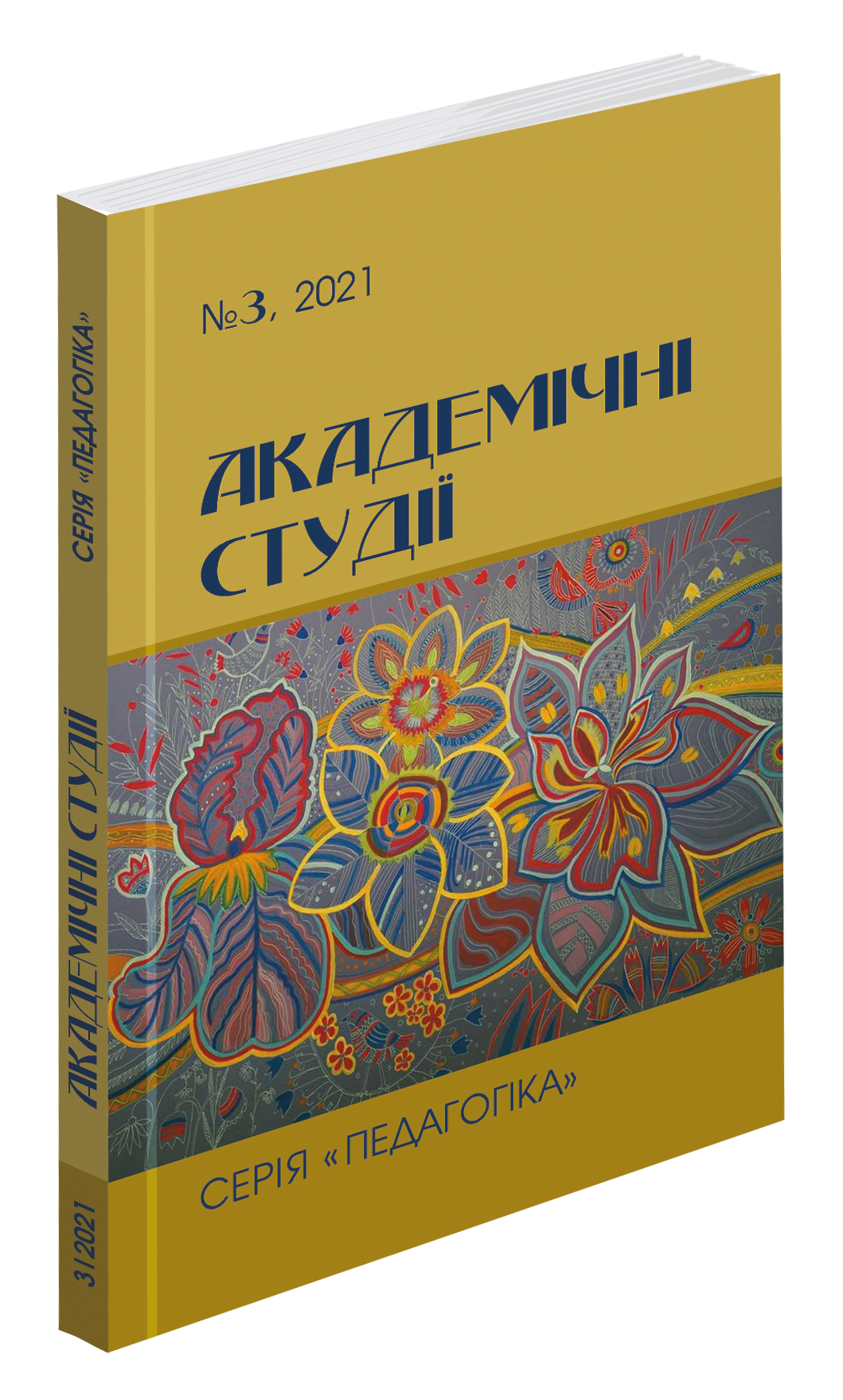Abstract
The dynamic development of the information society, information and communicative technologies require new demands for the future entrants’ educational training. Future professionals must be able to think freely, actively and creatively; independently generate and use new ideas and technologies; model their educational trajectory and develop continuously. The focus of the modern school is the organization and implementation of distance learning, which allows creating virtual educational environment for each student and using innovative teaching methods with the help of computer technologies. The analysis of the legislative and scientific sources concerning the requirements of the XXI century in the conditions of New Ukrainian School is accomplished. The process of foreign language learning should be aimed at developing the student’s personality who is able and desire to participate in intercultural communication and can develop oneself in future activities. The requirements of New Ukrainian School determine the need to master the high school students’ communicative competence. One of the most important component of the communicative competence is the discursive aspect, that involves the students’ ability to navigate in communication, perceive, understand, reproduce and create their own discourse according to the stylistic rules; combine individual sentences into coherent passages of discourse using different semantic and syntactic means of cohesion; analyse the situation of communication and its components; take into account the context of communicative interaction; design communication, while determining the model of discourse construction and selecting language tools for its implementation; interpret discourse according to the communicative situation; structure the discourse according to the features of the functional style and genre form; control and regulate the general modality of discourse; distinguish linguistic and extralinguistic parameters of discourse; identify and understand the connection between linguistic means and extralinguistic aspects of language. A mixed form of foreign language learning is a holistic learning process that consists of two parts of students’ cognitive activity – live learning under the teacher’s guidance and distant learning, with the predominance of independent types of work. Combining the best aspects and advantages of teaching in the classroom and distant learning, the model of blended learning allows to implement the principles of clarity, adaptability in large groups. Competent distribution of methodological resources is the result of a high level of foreign language students’ knowledge, in particular the discursive competence of high school students.
References
Бігич О. Б., Бориско Н. Ф., Борецька Г. Е. Методика навчання іноземних мов і культур: теорія і практика: підручник для студентів класичних, педагогічних і лінгвістичних університетів / за заг. ред. С. Ю. Ніколаєвої. Київ : Ленвіт, 2013. 590 с.
Буднік А. О. Формування дискурсних умінь студентів філологічних спеціальностей засобами національно-прецедентних текстів : дис. … канд. пед. наук : 13.00.02. Одеса : ПНПУ імені К. Д. Ушинського, 2010. 258 с.
Гонтаренко І. С. Застосування методу проектів із майбутніми вчителями гуманітарних дисциплін. Проблеми сучасної педагогічної освіти. Ялта, 2013. С. 198–203.
Горобченко Н. В. Сучасні тенденції формування дискурсивної культури старшокласників. Науковий часопис НПУ ім. М. П. Драгоманова. Серія 5. Педагогічні науки: реаліїї та перспективи. Вип. 79. 2021. С. 100–103.
Горобченко Н. В. Сучасні вимоги до оновленої української школи. Педагогічні науки. Вип. 81 (3). 2018. С. 110–114.
Гриценко О. І. Культурний простір і національна культура: теоретичне осмислення та практичне формування. Київ : Інститут культурології національної Академії мистецтв України, 2019. 258 с.
Державний освітній стандарт з іноземної мови (загальна середня освіта) V–IX класи / керівн. автор. кол. С. Ю. Ніколаєва. Київ : Ленвіт, 1998. 32 с.
Конспект лекцій з дисципліни «Методика навчання іноземних мов»: для студентів 5 курсу ф-ту «Референт-перекладач» / за заг. ред. І. Ю. Гусленко. Харків : Вид-во НУА, 2018. 64 с.
Минина А. А. Модель смешанного обучения иностранным языкам: преимущества и недостатки. 2016. URL: http://www.nop- dipo.ru/ru/node/473.
Мучник Н. В. Навчальна дискусія – ефективний метод оволодіння іноземною мовою. Формування професійної компетентності майбутнього вчителя засобами інноваційних освітніх технологій. № 3. 2006. С. 104–105.
Ніколаєва С. Ю Загальноєвропейські Рекомендації з мовної освіти: вивчення, викладання, оцінювання / наук. ред. укр. вид. Київ : Ленвіт, 2003. 273 с.
Методика навчання іноземних мов і культур: теорія і практика: підручник для студентів класичних, педагогічних і лінгвістичних університетів / О. Б. Бігич, Н. Ф. Бориско, Г. Е. Борецька та ін. ; за заг. ред. С. Ю. Ніколаєвої. Київ : Ленвіт, 2013. 590 с.
Моісєєва Н. О. Особливості перекладу неологізмів у текстах німецькомовного політичного дискурсу. Наукові записки Ніжинського державного університету ім. Миколи Гоголя. Серія : Філологічні науки. 2014. Кн. 3. С. 114–118.
The Oxford English Dictionary. Second edition. Band 2. Clarendon Press Oxford, 1989. 1200 p.
Kravets O., Svyrydenko І. The use of educational information design technology in the course of foreign language distance learning at non-philological faculties. Information Technologies and Learning Tools. Т. 60, Вип. 4. 2017. С. 195–204.

